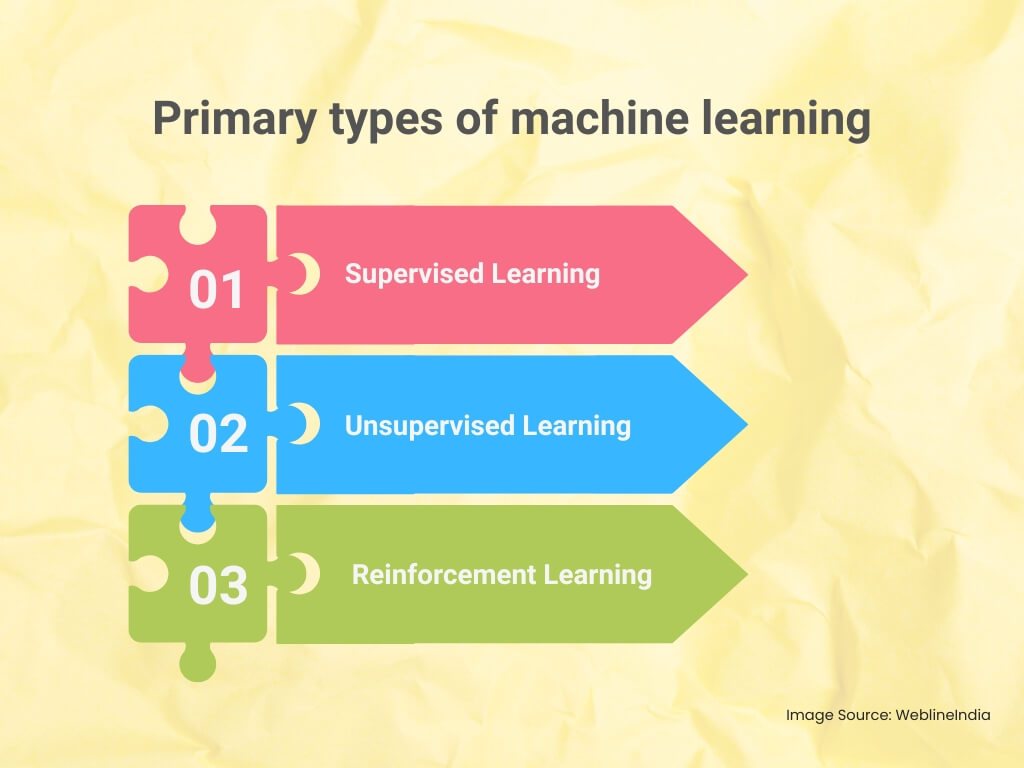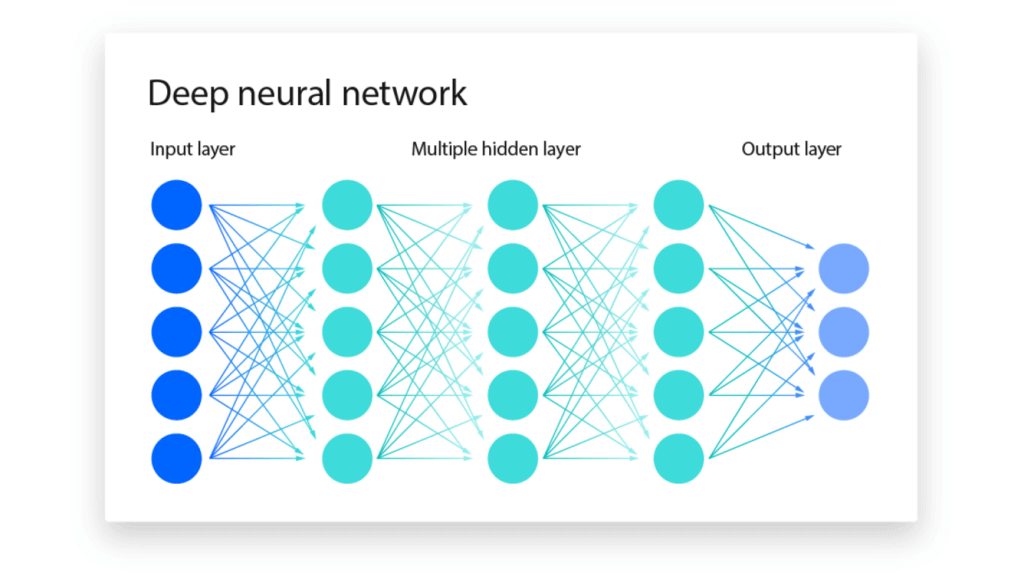Listen to the podcast :
Today, artificial intelligence (AI), machine learning (ML), deep learning (DL), and generative AI (GenAI) are not alien terms to anyone. While everybody knows them, they are often used interchangeably ignoring the fact that they represent different concepts. Whether you’re using a voice assistant, watching personalized video recommendations, or reading AI-generated content, these technologies are shaping our everyday lives. Understanding the differences between AI, ML, deep learning, and GenAI is key to grasping how these innovations are transforming industries and the future of technology.
In this blog, we’ll break down AI vs ML vs Deep Learning vs Generative AI with examples, tables, and 2025 business use cases.
Looking to harness AI for your business growth and efficiency?
Why Should You Care?
AI is everywhere. Understanding these technologies is crucial in today’s world. Whether you’re a tech enthusiast, a business leader, or simply curious about the future, grasping the basics of AI, ML, DL, and GenAI will empower you to make informed decisions and navigate the evolving technological landscape.
Check the growth of AI adoption worldwide as stated in the National University blog on AI statistics:
AI is everywhere: A whopping 77% of the devices we use today are powered by some form of artificial intelligence. It’s no longer a futuristic fantasy; it’s woven into the fabric of our technological lives.
Businesses embrace AI: 9 out of 10 organizations recognize the competitive edge AI provides and actively support its implementation.
AI’s economic boom: By 2030, AI is predicted to inject a staggering $15.7 trillion into the global economy, highlighting its transformative potential.
AI: A job creator, not a job killer: While concerns about AI replacing jobs persist, the reality is more nuanced. By 2025, AI is expected to create a net gain of 12 million jobs globally, though it will undoubtedly reshape the job market.
Global AI adoption on the rise: Within the next three years, 63% of organizations worldwide plan to integrate AI into their operations.
AI market’s rapid expansion: The AI market is experiencing explosive growth, with a projected year-over-year increase of at least 120%.
Continued surge in 2024: This momentum shows no signs of slowing down, with the global AI market predicted to grow by 33% in 2024 alone.
AI’s hidden presence: Many of us are using AI without even realizing it. While only a third of consumers believe they interact with AI platforms, the actual usage rate is 77%.
Difference between AI vs ML vs DL vs GenAI
While these terms are often used interchangeably, they represent distinct yet interconnected concepts. Think of them as a set of Russian nesting dolls nested within each other. Let us see each of these terms and learn the subtle differences between them.
ML, Deep Learning and Artificial Intelligence in Healthcare
What is Artificial Intelligence (AI)?
Artificial intelligence (AI) refers to the simulation of human intelligence in machines programmed to think, learn, and problem-solve. AI enables machines to perform tasks that typically require human-like decision-making, such as visual perception, speech recognition, decision-making, and language translation. With the rise of AI adoption, recent AI statistics indicate that over 90% of leading businesses are investing in AI to improve efficiency and decision-making processes. In its broadest form, AI can be divided into two categories:
- Narrow AI (Weak AI): This is AI designed to perform a specific task, such as voice assistants like Siri or Google Assistant. Narrow AI is the most common form of AI we interact with today.
- General AI (Strong AI): This type of AI would be capable of performing any intellectual task that a human can. It remains a theoretical concept and has not been achieved yet.
Where do you find them in everyday life:
- chatbots,
- recommendation systems (think Netflix or YouTube),
- voice assistants, self-driving cars,
- virtual assistants,
- image recognition, and
- predictive analytics.
What is Machine Learning (ML)?
Machine learning (ML) is a subset of AI that focuses on enabling machines to learn from data and improve over time without being explicitly programmed. Rather than following programmed instructions, ML algorithms analyze and learn from data patterns, making predictions or decisions based on that information.
There are three primary types of machine learning:

- Supervised Learning: In this type of learning, models are trained on labeled data (data that has both input and corresponding output). For example, a supervised ML algorithm could be used to predict house prices based on historical data.
- Unsupervised Learning: Here, models are given data without explicit labels. They must find patterns or structures on their own, such as grouping customers with similar behaviors in marketing campaigns (this is known as clustering).
- Reinforcement Learning: This type of ML involves an agent that learns to make decisions by interacting with its environment. For example, self-learning AI used in game AI or robotic control systems.
Where do you find it in everyday life:
- email spam filters,
- fraud detection,
- personalized recommendations
Ready to integrate AI into your business strategy for success?
AI vs ML
Artificial Intelligence (AI) and Machine Learning (ML) are often used interchangeably, but they’re not the same. AI is the umbrella term for systems that mimic human intelligence, while ML is a subset of AI that focuses on learning from data.
Key Points:
AI = Broad field that includes ML, Deep Learning, and Generative AI.
ML = Uses algorithms to recognize patterns and improve predictions over time.
AI vs ML in business: AI powers end-to-end automation (e.g., chatbots, decision engines), while ML handles data-driven predictions (e.g., demand forecasting).
| Aspect | Artificial Intelligence (AI) | Machine Learning (ML) |
| Definition | A broad field of creating machines that simulate human intelligence | A subset of AI where systems learn from data and improve over time |
| Goal | Replicate human-like decision-making | Improve performance on tasks without explicit programming |
| Examples | Self-driving cars, voice assistants, robotics | Spam filters, recommendation engines, fraud detection |
| Scope | Broad (includes ML, DL, GenAI, etc.) | Narrow (focused on data-driven learning) |
What is Deep Learning (DL)?
DL is a subfield of ML that uses artificial neural networks with multiple layers (hence “deep”) to analyze data. Inspired by the structure of the human brain, these neural networks can learn complex patterns and representations from vast amounts of data.
Inspiration from the Human Brain
Just as our brain has interconnected neurons that transmit information, deep learning models have interconnected nodes (neurons) organized in layers. Each layer learns different features and abstractions from the data, allowing the network to progressively extract higher-level information.
The term “deep” in deep learning signifies the multiple layers in a neural network. Think of these layers as a hierarchy, where each layer progressively extracts more complex features and patterns from the data. A neural network with more than three layers (including the input and output layers) is considered a deep learning algorithm, enabling it to tackle intricate tasks like image recognition and natural language processing by learning intricate representations of data.

Source: IBM on Deep Learning
Why Deep Learning is Powerful in Handling Complexity
DL excels at handling complex, unstructured data like images, audio, and text. This is because deep neural networks can automatically learn hierarchical representations of the data, capturing intricate patterns and relationships that would be difficult to define manually.
DL Applications
- Image recognition: DL powers image recognition systems in self-driving cars, facial recognition software, and medical image analysis.
- Natural language processing (NLP): DL enables machines to understand and generate human language, powering applications like chatbots, machine translation, and sentiment analysis.
- Speech recognition: DL algorithms convert spoken language into text, enabling voice assistants like Siri and Alexa to understand your commands.
AI vs ML vs Deep Learning
Deep Learning (DL) is a specialized branch of ML that uses neural networks with many layers. While AI defines the broader field, and ML focuses on algorithms, DL is what enables today’s most advanced technologies.
AI vs ML vs DL in simple terms:
AI → The idea of making machines intelligent.
ML → The technique of teaching machines with data.
DL → The advanced form of ML using neural networks.
Real-world examples (2025):
AI → Customer service chatbots.
ML → Fraud detection systems.
DL → Image recognition in healthcare & self-driving cars.
| Factor | AI | ML | Deep Learning (DL) |
| Definition | Broad field of intelligent systems | A subset of AI using algorithms to learn from data | Subset of ML using neural networks for advanced learning |
| Data Needs | Can work with structured & unstructured data | Requires large datasets | Requires massive datasets & computing power |
| Complexity | Low to very high | Medium | Very high |
| Examples | Chess-playing bots, expert systems | Email spam filters, predictive analytics | Image recognition, speech-to-text, self-driving cars |
What is Generative AI (GenAI)?
GenAI refers to a subset of artificial intelligence designed to create new content, such as text, images, music, or even videos. Unlike traditional AI, which is primarily focused on analyzing and predicting, GenAI generates something original by learning patterns from existing data.
One of the most well-known examples of Generative AI is ChatGPT, an AI model that can generate human-like text based on prompts. GenAI also powers tools like DALL·E, which can generate images from text descriptions, and AI music composition tools that create melodies based on genre preferences.
Generative models use sophisticated techniques such as generative adversarial networks (GANs) and variational autoencoders (VAEs). These methods help the model learn not only from data but also how to creatively generate new examples that resemble the training data. GenAI is revolutionizing industries like entertainment, marketing, and design, enabling AI-generated art, automated content creation, and even personalized advertising.
Popular GenAI examples
- ChatGPT: A large language model that can engage in conversations, answer questions, and generate different creative text formats.
- DALL-E 2: An AI system that can create realistic images and art from a description in natural language.
- GitHub Copilot: An AI-powered code completion tool that helps developers write code faster and more efficiently.
Machine Learning vs Generative AI
Machine Learning and Generative AI may sound similar, but their purposes are very different.
Key Differences:
ML predicts, classifies, and analyzes data.
Generative AI creates new content (text, images, music, code).
Business angle: ML improves efficiency; GenAI fuels creativity and innovation.
Examples in 2025:
ML → Predicting credit risk, product recommendations.
GenAI → Marketing content, design prototypes, personalized customer interactions.
| Aspect | Machine Learning (ML) | Generative AI (GenAI) |
| Purpose | Finds patterns & predicts outcomes | Creates new content (text, images, code, audio) |
| Core Process | Training on historical data | Training on massive unstructured data with transformers |
| Output | Predictions, classifications | Creative outputs (stories, designs, videos) |
| Example | Credit scoring, medical diagnosis | ChatGPT, DALL-E, Stable Diffusion |
Narrow AI vs Generative AI
Narrow AI (also known as Weak AI) is task-specific, designed for one function only. Generative AI, on the other hand, can create new outputs across domains, making it much more versatile.
Comparison points:
Narrow AI: Limited to one job (e.g., Google Maps navigation, recommendation engines).
Generative AI: Adaptive, creative, and versatile (e.g., ChatGPT, DALL·E).
In business: Narrow AI = automation & optimization. GenAI = content generation, product design, innovation.
| Criteria | Narrow AI | Generative AI |
| Scope | Designed for a single, specific task | Capable of generating diverse, creative content |
| Flexibility | Limited (can’t go beyond task) | Flexible, adapts to multiple creative domains |
| Examples | Virtual personal assistants, chess-playing AI | Text generation, code assistants, image creators |
| Business Use | Automation of routine processes | Innovation, marketing, design, content creation |
Comparing AI vs Deep Learning vs ML vs GenAI
At a high level, AI is the umbrella term that encompasses both ML and deep learning, as well as GenAI. They are interchangeable on a broader term but according to use cases and projects.
Let’s break down the key factors that make them different:
1. Scope and Purpose:
- AI is the broadest concept, covering all technologies aimed at making machines intelligent.
- ML is a subset of AI focused on enabling machines to learn from data.
- Deep Learning is a more specialized branch of ML that deals with complex neural networks and requires large datasets and computing power.
- GenAI is a subset of AI focused on generating new, creative content.
2. Data Requirements:
- AI can work with predefined rules and simple logic (especially in narrow AI).
- ML relies on data to make predictions, with algorithms designed to learn from it.
- Deep Learning requires vast amounts of data and computational resources to train models effectively.
- GenAI needs large datasets for learning and generating original content.
3. Use Cases:
- AI: Virtual assistants (Siri, Alexa), customer service chatbots.
- ML: Predictive analytics, email spam filtering, fraud detection.
- Deep Learning: Image recognition, speech-to-text applications, autonomous vehicles.
- GenAI: Text generation (ChatGPT), image creation (DALL·E), AI-generated music.
Summarizing table: AI vs ML vs Deep Learning vs GenAI
| Aspect | Artificial Intelligence (AI) | Machine Learning (ML) | Deep Learning (DL) | Generative AI (GenAI) |
| Definition | The simulation of human intelligence in machines. | A subset of AI focused on learning from data to improve decisions. | A type of ML using neural networks to process complex data. | A subset of AI focused on creating new content (text, images, etc.). |
| Scope | Broad and general – includes all intelligent machines. | Narrower – focuses specifically on learning from data. | A specialized branch of ML focused on large-scale data and complex models. | Focused on creative applications like content generation. |
| Data Requirements | Can work with both structured and unstructured data. | Needs data for training, but doesn’t always need massive datasets. | Requires vast amounts of data and high computational power. | Requires large datasets to generate realistic content. |
| Key Techniques | Logical reasoning, rule-based systems, search algorithms. | Supervised, unsupervised, and reinforcement learning. | Neural networks, especially multi-layered networks (CNNs, RNNs). | Generative Adversarial Networks (GANs), Variational Autoencoders (VAEs). |
| Use Cases | Virtual assistants, chatbots, autonomous vehicles. | Fraud detection, recommendation systems, email spam filters. | Image recognition, speech-to-text, autonomous driving. | AI-generated art, text generation (e.g., ChatGPT), music composition. |
| Examples | Siri, Google Assistant, Copilot, self-driving vehicles. | Predictive analytics, personalized recommendations. | Face recognition, medical image analysis, self-driving cars. | DALL·E (image generation), ChatGPT (text generation), AI art. |
| Complexity | Varies based on the task, from simple to complex. | Medium complexity – algorithms that learn from data. | High complexity due to neural networks and large datasets. | High complexity due to creative content generation models. |
| Level of Autonomy | Can operate based on predefined rules or learn from data. | Learns from data but requires initial programming. | Learns complex patterns automatically, requires minimal human input. | Generates content autonomously based on learned patterns. |
The Future of AI, ML, Deep Learning, and GenAI
As these latest technologies evolve, we can expect even more groundbreaking applications. AI will continue to impact healthcare, education, entertainment, and business. ML will drive automation and smarter decision-making. Deep learning will enable advances in vision-based technologies and AI understanding of complex data. Meanwhile, Generative AI will likely redefine creative fields by making content generation more accessible and scalable.
However, with these advancements come challenges, including ethical concerns around bias, data privacy, and the future of work. Understanding the subtleties of AI, ML, deep learning, and GenAI will be essential as we move forward into an increasingly AI-driven world.
Wrapping up
In summary, while artificial intelligence, machine learning, deep learning, and generative AI are interconnected, each represents a different facet of the rapidly evolving technological landscape. AI serves as the foundation, with ML and deep learning being its subsets, while GenAI brings a creative dimension to the table.
As these technologies advance, their applications in various industries will continue to grow, offering both opportunities and challenges. Understanding the differences between these concepts not only enhances your knowledge of modern tech but also prepares you for the future of work and innovation.
Social Hashtags
#AI #ML #DeepLearning #GenerativeAI #GenAI #AIvsML #DeepLearningTrends #FutureofAI #MachineLearningInsights #DLvsAI #AITechnologies #MLvsGenerativeAI
Confused about which AI technology suits your project needs best?
Testimonials: Hear It Straight From Our Global Clients
Our development processes delivers dynamic solutions to tackle business challenges, optimize costs, and drive digital transformation. Expert-backed solutions enhance client retention and online presence, with proven success stories highlighting real-world problem-solving through innovative applications. Our esteemed Worldwide clients just experienced it.
Awards and Recognitions
While delighted clients are our greatest motivation, industry recognition holds significant value. WeblineIndia has consistently led in technology, with awards and accolades reaffirming our excellence.

OA500 Global Outsourcing Firms 2025, by Outsource Accelerator

Top Software Development Company, by GoodFirms

BEST FINTECH PRODUCT SOLUTION COMPANY - 2022, by GESIA

Awarded as - TOP APP DEVELOPMENT COMPANY IN INDIA of the YEAR 2020, by SoftwareSuggest